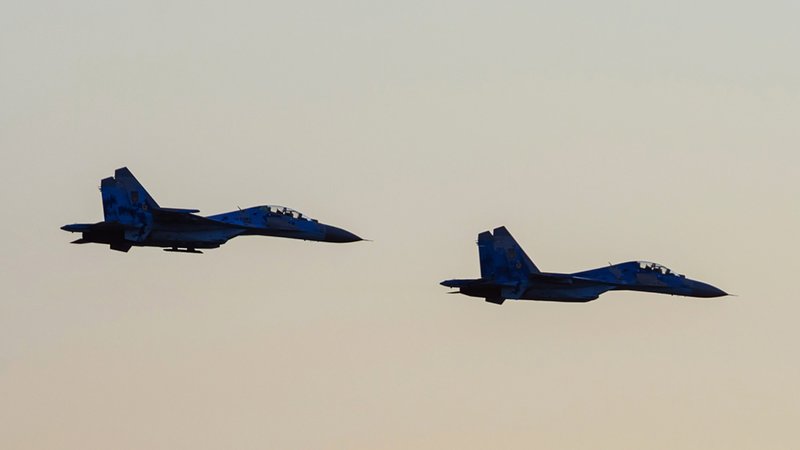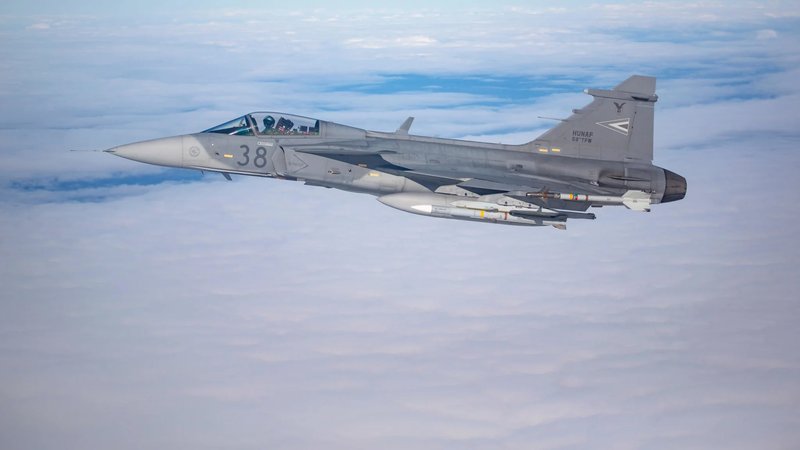Staying power – why mid-life upgrades still matter
That essays citing the apparent lessons from Ukraine have become a cliché does not mean they are any less interesting. Most conflicts are marked by larger or smaller affronts to pre-war thinking, and this has been no exception.
War always makes for rapid advances, many unplanned. Perhaps the shorthand takeaway is that almost all military assumptions are questionable until proven. This was summarised neatly by the boxer Mike Tyson: ‘Everyone has a plan, until they are punched in the face.’... Continues below
Newsletter Sponsor:

Above: Ukraine’s rapid integration of Western missiles and other technologies onto its legacy Su-27s underlines the importance of upgrades to create new capabilities that are immediately available. (Photo: Armed Forces of Ukraine)
From an aerospace perspective, one surprise has been just how rapidly the Ukrainian military has adopted and adapted new weapons and systems. Previously, the idea of matching A to B required many months of careful consideration before anyone actually touched anything.
In Ukraine, a particular example has been advanced Western equipment ‘miraculously’ achieving rapid integration with local Soviet-era aircraft. Pictures show Storm Shadows – very advanced air-to-ground-weapons – and others on the Su-27 series.
Perhaps more tellingly, cockpit photos reveal iPads sellotaped to instrument panels. No one would claim that such a feature is ideal or even sustainable, but it seems to have worked under the prevailing circumstances, which for weapons is arguably the crucial test.
Western militaries paying billions to manufacturers advancing software package 1 to package 1.001 (goal: software package 5) over a decade might be forgiven for some frustration.

New defence acquisitions are important, but often politically driven and decided. Less interesting is the sustainment and upgrade of existing equipment, because this does not look as good on the resume of a senior officer or defence minister.
But it is easier to keep a system in service and develop it, and it is certainly lower risk and avoids the inevitable gap between retirement and new operating capability.
One way of handling this has been the mid-life upgrade (MLU). This was fashionable in the 1990s, with European F-16 fleets being the obvious example, but as a principle was widely adopted by many nations. In 2024, the question is whether it can be continued in the face of new air defence systems and new fighter designs.
The short answer is not simply, ‘yes’, but that it is vital. With pilot capability and training remaining paramount, an upgrade to a successful design is the low-cost/low-risk path to a useful and deployable force.
One item usually forgotten in combat capability calculations is that of mass and availability. Ukrainian aerial operations have seen very high casualty rates. Here, incremental improvements might not be ‘game-changing’, but from a force employment perspective they are essential and can be easily absorbed and used.
With F-35s achieving very low readiness rates even when backed by the mighty USAF, what hope has a small nation of deploying even a few of its new toys? The same can be levelled at Eurofighter, Rafale and others.
Clearly, introduction of new designs is a sensible long-term goal. B-52s reaching their centenary is an outlier akin to North Korean MiG-17s (technically J-5s) not going anywhere. But an F-16 Viper package, a Gripen MS20 update or the new E/F model arguably makes great sense in order to create and maintain a force in being, ie one which exists to deter and to act, not sit around and await a new panel or for the computer to restart.

Above: Upgrade packages such as the Gripen’s MS20 standard are proven and do not have the uncertainties caused by inducting a wholly new aircraft type. (Photo: Saab)
Ukraine still awaits the F-16s that were promised. Reportedly, Gripens were also considered, and declared a better choice by various defence publications. For customers anticipating a round of new force procurement, there is an essentially human attraction to new toys.
But this brings with it a soupcon of hubris – integration of a new fleet is a costly and painful affair often underestimated by the unwary. There exists a significant and untapped fleet of capable military aircraft in service or on the export market, mirrored by a range of eager system and service providers. New platforms have their place, but they bring their own problems. Caveat emptor.
Other articles in this newsletter:
Rethinking support fleets – does the US need to change direction on tankers and transports?
Warning signals – is the AEW aircraft market about to take off again?
Don't want to miss out on future Decisive Edge content? Make sure you are signed up to our email newsletters.











